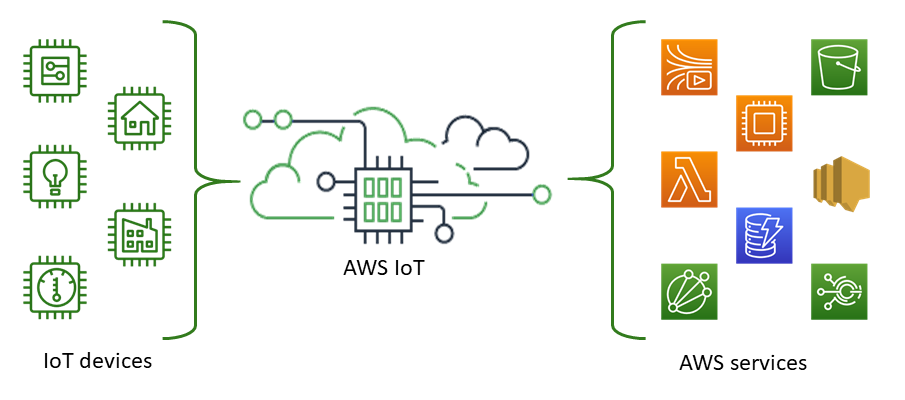What exactly is AWS IoT?
AWS IoT connects the IoT devices to other IoT devices and AWS cloud services. Device software from AWS IoT will help you incorporate your IoT devices into AWS IoT-based solutions. If your devices are compatible with AWS IoT, AWS IoT will link them to AWS cloud services.
You can choose the most suitable and up-to-date technologies for your solution with AWS IoT. AWS IoT Core supports the following protocols to help you control and maintain your IoT devices in the field: 
MQTT (Message Queuing and Telemetry Transport)
MQTT over WSS (Websockets Secure)
HTTPS (Hypertext Transfer Protocol - Secure)
LoRaWAN (Long Range Wide Area Network)
The MQTT and MQTT over WSS protocols are supported by the AWS IoT Core message broker, which allows devices and clients to publish and subscribe to messages. It also operates with computers and clients that use the HTTPS protocol to send messages.
Link and control wireless LoRaWAN (low-power long-range Wide Area Network) devices with AWS IoT Core for LoRaWAN. You no longer need to build and maintain a LoRaWAN Network Server with AWS IoT Core for LoRaWAN (LNS).
If you don't need AWS IoT features like system communications, rules, or employment, look into AWS Messaging for details on other AWS messaging services that may be more suitable.
Check out How AWS IoT Operates, whether you're new to IoT or have years of experience. This article will help you better understand AWS IoT concepts and terminology so you can get started with AWS IoT.
How to get started with AWS IoT
- Examine AWS IoT and its components in depth. What is AWS IoT and how does it work?
- In AWS IoT, connect your first computer. AWS IoT Core: Getting Started
- Connect to AWS IoT Core and explore the AWS IoT Tutorials to develop your IoT solutions.
- Using the System Advisor, you can test and verify your IoT devices for safe and efficient communication.
- Use AWS IoT Core management services including Fleet indexing, Jobs, and AWS IoT Device Defender to manage your solution.

Build applications on your devices that send and receive messages from AWS IoT using the AWS IoT Device SDKs. See AWS IoT Device SDKs, Mobile SDKs, and AWS IoT Device Client for more detail.
- AWS IoT Core for LoRaWAN—Use AWS IoT Core for LoRaWAN to link and control your long-range WAN (LoRaWAN) devices and gateways.
- Run commands for AWS IoT on Windows, macOS, and Linux using the AWS Command Line Interface (AWS CLI). Create and manage thing objects, licences, rules, jobs, and policies with these commands. See the AWS Command Line Interface User Guide to get started.To get started, consult the AWS Command Line Interface User Guide.
- AWS IoT API—Use HTTP or HTTPS requests to create IoT applications. These API actions let you build and manage thing objects, certificates, rules, and policies programmatically. See Actions in the AWS IoT API Reference for more detail on AWS IoT API actions.
- AWS SDKs—Use language-specific APIs to build IoT applications. These SDKs wrap the HTTP/HTTPS API and let you programme in any of the languages that are supported. AWS SDKs and Tools has more detail.
The AWS IoT console, which provides a graphical user interface (GUI) from which you can configure and manage thing objects, certificates, rules, jobs, policies, and other elements of your IoT solutions, is also available.
Comments
Post a Comment